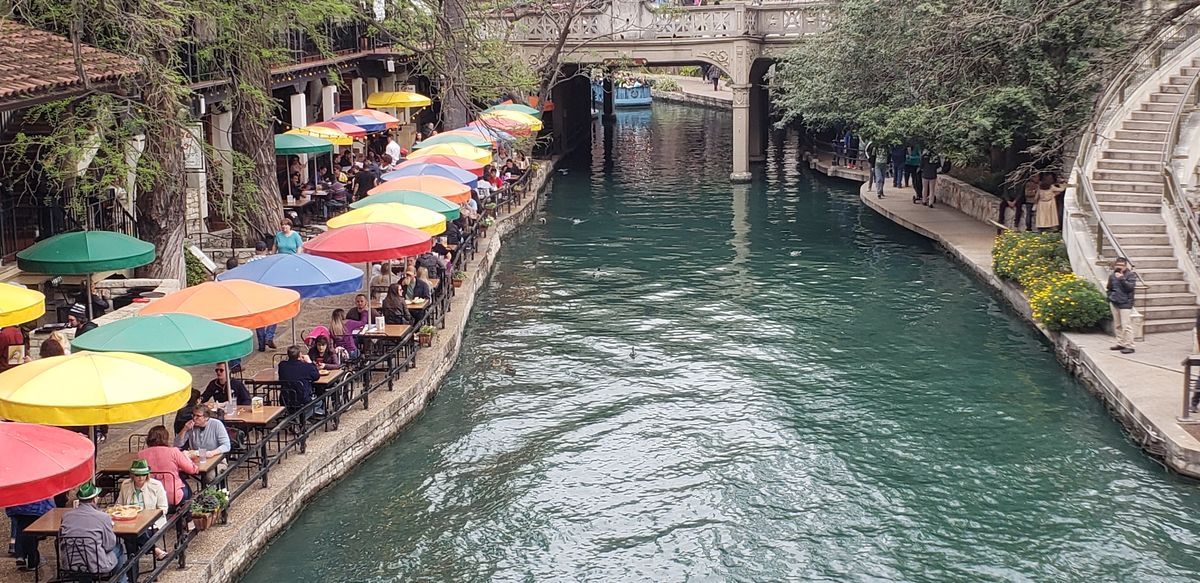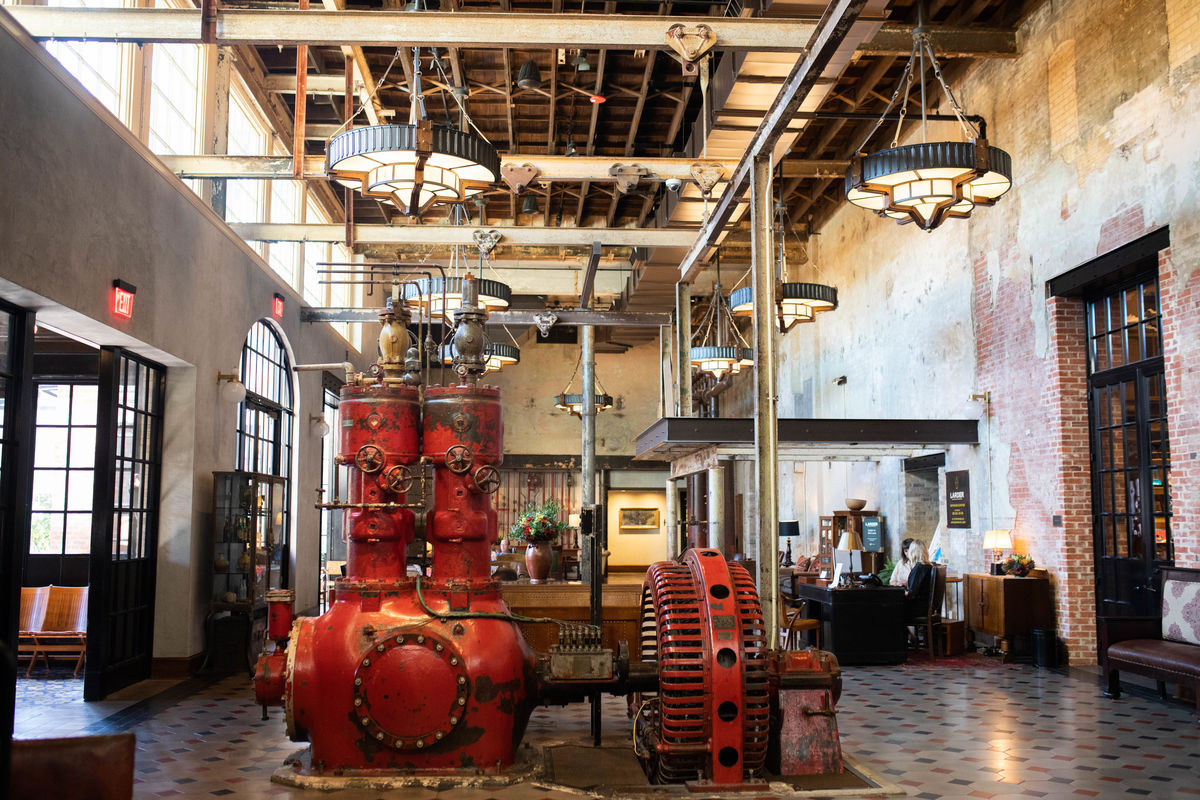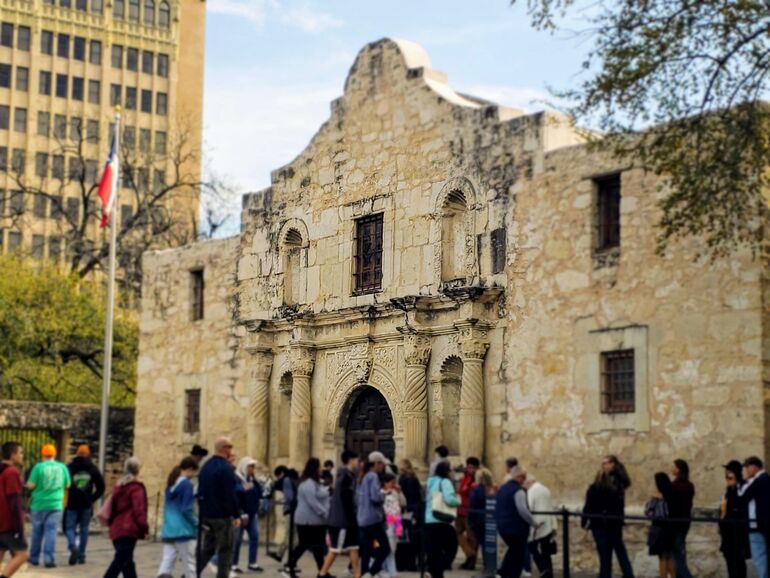Start 14-Day Trial Subscription
*No credit card required

A Beer Tour of San Antonio
Texans are friendly folk and good beer-drinking companions, and the city of San Antonio is one of the best places to enjoy the state’s hospitality on a beer tour of San Antonio. While you’re getting acquainted, you may be taken aback, however, if a new-found friend suddenly asks, “How’d you like a Shiner?” Have no fear. You are in no danger of receiving a black eye or being attacked. Your buddy is offering to introduce you to one of the Lone Star State’s popular beers from one of its oldest breweries, Spoetzl, located in Shiner, Texas, about 90 miles east of San Antonio.
At last count, there are 275 craft breweries in Texas, but you don’t have to travel to Shiner or anywhere else to experience the full range of Texas beers. San Antonio, the state’s second-largest city, and with a population of 1.5 million the country’s seventh-most populous metropolis, has a long and legendary beer culture. According to the Texas State Historical Association, the first Texas commercial brewery opened in San Antonio in 1855. Not surprisingly, Texans developed a fondness for fine brews. Barely five years later, they had a burgeoning industry with eleven breweries.
A German immigrant, William Menger along with his wife Mary, opened a brewery in 1858 on Alamo Plaza. Fans of American history and vintage westerns are, no doubt, familiar with the “Remember the Alamo” refrain. It memorializes the 1836 battle between Texas troops and Santa Ana’s Mexican forces. The Alamo, the oldest of five stone missions erected by the Catholic Church during the Spanish Colonial period, served as a fortress. Now a World Heritage Site, it is the most visited attraction in Texas.
The Menger Brewery proved so popular that the couple soon added a fancy hotel next door. The Menger Hotel, the oldest continuously operating hotel west of the Mississippi, enjoyed immediate success. It’s still a favorite with travelers who appreciate modern amenities and Old West charm. The bar is a perennially popular meeting place. Teddy Roosevelt rounded up the Rough Riders here and they quaffed more than a few beers before taking off for Cuba and making history at San Juan Hill.
From the Alamo and the Menger it’s a short stroll to the two-and-a-half mile long Riverwalk. Architect Robert Hugman designed it in 1929 for flood control of the San Antonio River, and it was built by the Works Progress Administration (WPA) during the Great Depression of the thirties. One story below street level, two parallel sidewalks follow the meandering river around bends and under bridges.
The Riverwalk is a delightful destination with flowering plants, many restaurants, and busy bars. Dine alfresco at Casa Rio, which claims to be the oldest restaurant on the Riverwalk, and enjoy such Tex-Mex standards as beef tacos and tamales with a Mexican cerveza. Sitting under a lollipop-colored umbrella, you’ll see colorful sightseeing barges float by. If you choose to take a ride on one, the captain’s glib patter will entertain with local gossip and history. Afterwards, continue north along the Riverwalk to the Pearl District, which is as popular with locals as it is with travelers.

The Riverwalk is perhaps the most notable attraction in San Antonio, and travelers are sure to find plenty of places to eat, drink and sightsee while meandering beside the San Antonio River.
The centerpiece of the complex is a vintage brick building: The 1894 brewhouse of the old Pearl Brewery. Updated and re-purposed, the buildings are now the five-star Hotel Emma, named in honor of the wife of Pearl Brewery founder Otto Koehler. After he died, Emma kept the brewery going even during Prohibition. Although most other breweries were forced out of business, she cleverly saved the Pearl by lowering the beer’s alcohol content.
The hotel is a noteworthy example of preservation. The original brewery equipment is the innovative "art" incorporated into the site’s architecture and landscaping. Hard to believe, but the hotel’s posh lobby is the former brewery refrigeration room. The massive red “sculpture” near the front desk is actually the ammonia compressor turbine once used for refrigeration. The dramatic chandeliers were bottle labelers and kerosene heaters.
The hotel’s Sternewirth bar recalls the tradition of the old Sternewirth Privilege at breweries that gave employees access to the tap room during the workday. The story is told of a Pearl manager who scolded a drunk employee for taking advantage of the privilege. “Oh no, sir” the worker assured his manager, “I was already drunk when I arrived today.”
The contemporary Sternewirth Bar and Pub now welcomes patrons under a 25-foot high vaulted ceiling. The polished wood bar and round tables are designed to encourage conversation. Three booths at the east end of the room are former fermentation tanks. The chandelier in the center of the room is made from the base of a bottle labeler.

The 1894 home of the Pearl Brewery is now the five-star Hotel Emma, which harkens back to its brewing roots by using the orginal brewing equipment as art and decoration throughout the hotel -- including in its posh lobby area.
Photo Courtesy Chase Daniel
In addition to more than 18 beers in cans, bottles and on tap, Sternewirth serves a unique draft beer called SABA (San Antonio Brewing Association). This Altbier recipe was originally used by the Association when it operated here from 1933-1952. More than 85 years later, you can enjoy the same beer in the same place it was brewed. In addition to the usual pub grub and snacks, the menu lists a variety of European bar foods like meatballs with poppyseeds.
Independent food booths in the bottling building next door serve a selection of local delicacies such as barbecued brisket. Order at the counter, then go outside to picnic on the grass or at a garden table. Boutiques, galleries and intimate restaurants with outdoor tables border the lawns. A fountain‘s dancing waters and the spontaneous music of a visiting guitarist foster a relaxing interlude during a day of sightseeing.
Historic Market Square, however, is far from relaxing. Reputed to be the largest Mexican market in the United States, it’s a wonderful, noisy, busy and eye-catching pedestrian place for families to experience the sights and sounds of Old Mexico. Three blocks of two-story wood buildings like those in old movies sport ornamental flags and triangles of bright colors that zig-zag from second-floor balconies back and forth across the street.
At street level, the market is one big open-air bazaar with counters and crates filled with Mexican-made curios, clothing, foods and art. Bars and restaurants are stuffed between the shops. Vaqueros, Mexican cowboys, and Texas cowboys and cowgirls mingle, and many walk around with a beer in hand. Crowds huddle around a bandstand in the center of the hubbub, where bands and vocalists perform. Occasionally, people in the audience sing along. It’s loud and lively. Children zip in and out of the audience, dodging pedestrians’ arms and legs. In front of the bandstand, there’s a child-sized mechanical bull all the kids want to ride.

Hotel Emma's Sternewirth Pub continues the theme of repurposing vintage brewing equipment, as the pub's chandelier is made from the base of an old bottle labeler.
When it’s time for a pause to refresh, the outdoor tables at Viva Villa Taqueria, 905 Dolorosa, at the end of the street, invite passersby to sit and watch the spectacle. But if what you really desire is a quiet retreat, head inside. The spacious interior with its period wood chairs and tables resembles an old-time saloon. The long bar at the far end of the room is decorated with a mural portrait of the founder’s weathered face. The servers are helpful in deciphering the menu. The tasty Tex-Mex food is inexpensive; the chili is recommended.
The King William Neighborhood, also known as the Arts District, was recently cited as the most beautiful historic neighborhood in San Antonio. In the late 19th century German immigrants who became successful entrepreneurs, often as brewery owners, lived in this neighborhood and named it for King Wilhelm of Prussia. Many of their impressive mansions have been restored, not only as residences, but also as artists’ studios and galleries. Cheerful hot pink and lime green Rosario’s Café Y Cantina at the corner of 910 S. Alamo Street is especially popular. It serves such authentic dishes as Queso Flamado, a creamy cheesy dip, but is not shy about tinkering with a recipe for a contemporary spin like Pollo a la Maria, charbroiled chicken marinated in a cilantro pumpkin seed pesto with chipotle sauce. Rosario’s accommodates vegetarian and gluten free diets and stocks a solid selection of Mexican beers.
As you explore San Antonio, you’ll discover the city’s fondness for theme bars. With a 1960s airport lounge vibe, Jet-Setter, 229 E. Houston Street, in the heart of the theater district, offers a globally inspired menu. Pastiche, 1506 E. Houston Street, evokes Paris’ La Belle Epoque with mostly European beers. Flying Saucer Draught Emporium, 11255 Huebner Road, #212, embraces San Antonio’s legendary beer history, and, takes it to the next level with a Space Age theme that includes a UFO Club.
The sky’s the limit in San Antonio, where the beer selection is out of this world.

Photo Courtesy Chase Daniel




Comments